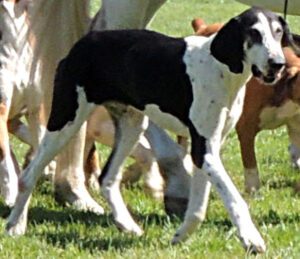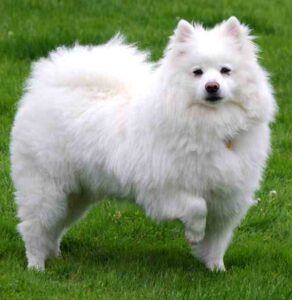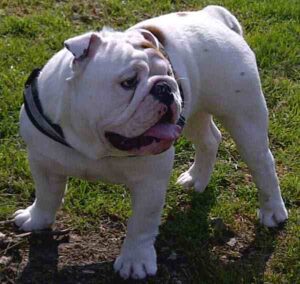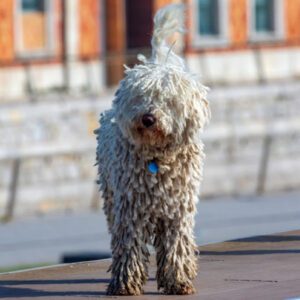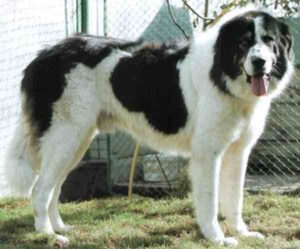The Alaskan Malamute dog is a large breed of domestic dog which was originally bred for it’s strength and endurance to haul heavy freight as a sled dog. It is also known by some other names such as Mal or Mally. And they are similar to other arctic, husky and spitz dog breeds.
The Alaskan Malamute had a prominent role with their human companions as a utilitarian dog, working, hunting and living alongside humans. The dogs were renowned for their excellent hunting abilities and were used to hunt large predators such as bears.
They also aided their owners in finding seals by alerting them to seal blowholes. The interdependent relationship between the Mahlemut and their dogs fostered prosperity among both and enabled them to flourish in the inhospitable land above the Arctic Circle.
For a brief period during the Klondike Gold Rush of 1896, the Alaskan Malamute and other sled dogs become extremely valuable to recently landed prospeectors settlers and were frequently crossbred with imported dog breeds. This was often an attempt to improve the type or to make up for how few true Malamutes were available to purchase.
(AKC) “Breed recognition came in 1935, largely through the efforts of Mrs. Eva B. Seeley. At that time many dogs were of unknown ancestry. Those who appeared purebred were used for breeding, others weeded out. After a few years, the registry was closed.” And in 2010, the Alaskan Malamute dog was named the official state dog of Alaska.[1]
Alaskan Malamute Dog Characteristics
The Alaskan Malamute dogs are large and beautiful animals. Their coat is a double coat. Their undercoat has an oily and wooly texture and can be as thick as two inches. The outer guard coat is coarse and stands of the body longer at the withers, but not more than one inch off the sides of the body.
Their ears are small in proportion to the head and the ears stand firmly erect when at attention. The usual colors of the Alaskan Malamute dogs are various shades of gray and white, sable and white, black and white, red and white, seal and white or simply solid white.
There are a wide range of markings in the breed including face markings, blazes, as splash at the name of the neck, and a collar or half collar. White is often the predominant color on their body, feet, part of the markings of the face and parts of the legs.
The eyes of these dogs are almond-shaped and are varied shades of brown. However, the darker eye is preferred. And the purebred dogs will not have blue eyes. The physical build of these dogs is compact and strong with substance, bone and snowshoe feet.
According to the AKC breed standard, the Malamute’s tail is well furred and is carried over the back like a waving plume. Corkscrew tails are occasionally seen but are faulted in the AKC breed standard (a corkscrew tail is commonly seen in the Akita).
The Malamutes well-furred tails aid in keeping them warm when they curl up in the snow. They are often seen wrapping the tail around their nose and face, which presumably helps protect them against harsh weather such as blowing snow.
The muzzle of the Alaskan Malamute dogs is deep and broad, tapering slightly from the skull to the nose. Their ears are generally upright, wedge-shaped, small in proportion to the head, and set to the side of the skull. Nose and gums are black but some Malamutes have a snow nose, which is black with a pink undertone that can get darker or lighter, depending on the season.
The AKC breed standard describes a natural range of size, with a desired size of 23 inches tall at the withers, and 34 kg weight for females. And 25 inches height and 39 kg weight for the males. Although heavier and smaller dogs than the standard are also seen.

Temperament
Like many other dog breeds, the temperament of the Alaskan Malamute dog is affected by a number of factors, including heredity, training and socialization. The dogs with nice temperament are curious and playful, willing to approach people and be held by them.
In case of adopting a dog, always meet a dog before adopting to ensure that it has nice temperaments that you are comfortable with. Meeting siblings or other relatives of the parents is also helpful for evaluating when a puppy will be like when it grows up.
Like other dogs, the Alaskan Malamute dogs also need early socialization (exposure to many different people, sights, sounds, and experiences when they’re young). Socialization helps to ensure that your dogs grow up to be a well rounded dog.
The Alaskan Malamute dogs are usually quiet dogs, seldom barking. When a Malamute does vocalize, it often appears to be “talking” by vocalizing a “woo woo” sound. It may howl like a gray wolf or coyote, and for the same reason. A similar-looking Spitz dog, the Siberian Husky, is much more vocal.
Lifespan
Average lifespan of the Alaskan Malamute dog is between 12 and 15 years.
Feeding
How much a mature dog eats depends on it’s size, age, build, metabolism and activity level. Dogs are individuals, just like people, and they don’t all need the same amount of food. An Alaskan Malamute dog’s diet should be formulated for a large sized breed with high energy and exercise needs. You can consult with your vet for better recommendation.
Caring
Taking good caring of your animals is the most important part of raising an Alaskan Malamute dog. This member of the Working Group of dogs is definitely a task seeker. They thrive on long walks, hikes, skijoring, carting and sledding. They need to run, play and generally bounce around a lot.
Inadequate exercise will cause the Alaskan Malamute dog to become bored and destructive. However, ensure that the exercise matches the dog’s age, health condition and activity level.
Malamutes love to dig. Rather than trying to stop this behavior, your best bet is to accommodate it by giving your Malamute his own place to dig in the yard, such as a sandbox or other area that you don’t mind setting aside for them.
As the Alaskan Malamute dogs have a dense double coat, so they can tolerate living outdoors in extremely cold climates. However, they do need adequate shelter and a fenced enclosure, preferably with a roof over it. Because Malamutes have an extremely high pack drive, they are happiest when residing with their pack in the house. They do well living inside a home because they keep their coats clean and are easy to housetrain.
The Alaskan Malamute dogs are sensitive to heat. And they are not designed by nature to live in hot and humid environments. It’s highly recommended that these dogs be enrolled in obedience training at a young age, due to their size, strength and smartness.
Health
The Alaskan Malamute dogs are generally healthy. But like all other dog breeds, they are also prone to certain health conditions. Their common health problems include hip dysplasia, elbow dysplasia, hypothyroidism and von Willebrand’s disease. Keep good contact with a vet in your area.
| Breed Name | Alaskan Malamute |
| Other Names | Mal or Mally |
| Breed Size | Large |
| Height | 23 inches tall at the withers for females, and 25 inches for males |
| Weight | 34 kg weight for females, and 39 kg for males |
| Good as pets | Yes |
| Climate Tolerance | Cool climates |
| Color | Various shades of gray and white, sable and white, black and white, red and white, seal and white or simply solid white |
| Lifespan | 12 to 15 years |
| Good for children | Yes |
| Rarity | Common |
| Country of Origin | United States |

